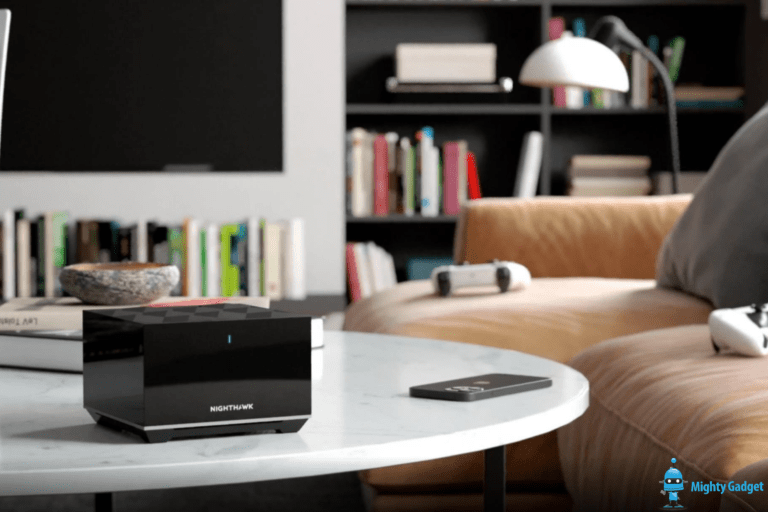Any links to online stores should be assumed to be affiliates. The company or PR agency provides all or most review samples. They have no control over my content, and I provide my honest opinion.
At CES 2024, MediaTek, a leading fabless semiconductor company, has announced a new collaboration with Google to develop a multi-radio chipset solution supporting Thread, Wi-Fi, Bluetooth and Matter for smart home devices. The chipset aims to enable faster and more reliable connections between devices from different manufacturers and ecosystems.
Related Content
- What is Matter?
- TP-Link Tapo P110M Matter Smart Plug Review
- Google Nest WiFi Pro Review – Testing Matter
- What’s the difference between a Thread Border Router (TBR) vs Full Thread Device (FTDs) vs Minimal Thread Device (MTDs)
- What Thread Border Routers Are There?
- What are the differences between Zigbee vs Thread
New Filogic Chipset Combines Multiple Protocols
The new Filogic chipset will pack Wi-Fi, Bluetooth, Thread and Matter support into a single (2 × 2) solution. This should allow smart home devices powered by the chipset to connect seamlessly over different protocols depending on bandwidth and power requirements.
For example, devices could use Wi-Fi for high-bandwidth activities like video streaming, Bluetooth for audio streaming to speakers, and Thread for low-power communication between devices. The Matter protocol will additionally enable interoperability between devices from the Google Home, Amazon Alexa, Apple HomeKit and other smart home ecosystems.
According to the press release, “the typical smart home relies on a variety of different wireless technologies, including high-speed Wi-Fi, low-power Thread, and audio/data via Bluetooth.” By combining all these protocols in one chip, MediaTek aims to enable a smoother smart home experience regardless of the specific technologies used.
Leveraging MediaTek’s Coexistence Technologies
As these wireless protocols share the crowded 2.4GHz frequency band, the chipset will leverage MediaTek’s existing coexistence technologies to avoid interference. Techniques like adaptive frequency hopping, transmit power control and time-division multiplexing will allow concurrent operation across Wi-Fi, Thread and Bluetooth.
Additionally, MediaTek states that “MediaTek’s upcoming Filogic multi-radio solution will adopt MediaTek’s leading coexistence and offload features to enable the seamless control of the smart home even in the lowest power-state of devices.” This should ensure smooth connectivity and operation even for battery-powered devices like security cameras, thermostats and remote controls.
Driving Wider Smart Home Adoption

This MediaTek-Google collaboration aims to drive large-scale adoption of smart home devices from different manufacturers. The multi-protocol Filogic chipset with Matter support will make it easier to develop interoperable products across ecosystems like Google Home, Amazon Alexa and Apple HomeKit.
As stated in the release, “MediaTek’s new multi-radio solution with built-in Matter support will make it even easier for more devices and services to work with each other across platforms and ecosystems.” This should spur innovation and consumer choice in the smart home market.
Enabling Next-Generation Smart Home Experiences
The multi-protocol chipset will also enable new use cases like lighting scenes coordinated across brands, or door locks activated by voice assistants from different ecosystems. Unifying the underlying technology will drive a new generation of smart home experiences.
As an example, the press release states that “from light bulbs and plugs to thermostats, cameras, locks, media streaming devices, smart speakers, and TVs, Google Home unites devices and services to build a personalized smart home experience for users.”
The new MediaTek chipset will enhance this connected experience by improving interoperability between even more device types.
MediaTek’s Leading Market Position
As a market leader powering popular consumer devices like smart TVs, Wi-Fi routers, voice assistants and more, MediaTek is well-positioned to drive adoption of this new chipset. The company’s portfolio already powers over 2 billion devices globally.
With brands likely to adopt this new offering into their product lineups, the MediaTek-Google collaboration aims to further accelerate smart home adoption and innovation.
Conclusion
MediaTek’s new multi-protocol Filogic chipset developed in collaboration with Google promises to unify smart home connectivity. By consolidating Wi-Fi, Bluetooth, Thread and Matter onto a single chip, device manufacturers will find it easier to build interoperable products across ecosystems. For consumers, this should translate into a more seamless and unified smart home experience regardless of the specific brands in their homes. With MediaTek’s scale and Google’s ecosystem, this chipset may help drive mainstream smart home adoption.
I am James, a UK-based tech enthusiast and the Editor and Owner of Mighty Gadget, which I’ve proudly run since 2007. Passionate about all things technology, my expertise spans from computers and networking to mobile, wearables, and smart home devices.
As a fitness fanatic who loves running and cycling, I also have a keen interest in fitness-related technology, and I take every opportunity to cover this niche on my blog. My diverse interests allow me to bring a unique perspective to tech blogging, merging lifestyle, fitness, and the latest tech trends.
In my academic pursuits, I earned a BSc in Information Systems Design from UCLAN, before advancing my learning with a Master’s Degree in Computing. This advanced study also included Cisco CCNA accreditation, further demonstrating my commitment to understanding and staying ahead of the technology curve.
I’m proud to share that Vuelio has consistently ranked Mighty Gadget as one of the top technology blogs in the UK. With my dedication to technology and drive to share my insights, I aim to continue providing my readers with engaging and informative content.







